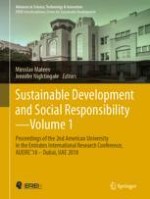2020 | OriginalPaper | Buchkapitel
Private Initiatives versus State Interventions in Downtown Cairo: An On-Going Debate Questioning the Sustainability of Newly Pedestrianized Streets. The Cases of Kodak and Al-Alfi Passageways
verfasst von : S. Ashour, B. Braker
Erschienen in: Sustainable Development and Social Responsibility—Volume 1
Aktivieren Sie unsere intelligente Suche, um passende Fachinhalte oder Patente zu finden.
Wählen Sie Textabschnitte aus um mit Künstlicher Intelligenz passenden Patente zu finden. powered by
Markieren Sie Textabschnitte, um KI-gestützt weitere passende Inhalte zu finden. powered by
